Cool skills that you can learn in less than 5 minutes

Is it possible to save money using credit cards? Is it significant?
July 1, 2021Imagine you could quickly explain the doubling speed of your money or know how to recall the day for any date in the history on your fingertips, how cool would you look front of your friends !!
So, let me mention some quick hacks, which you could do in under 5 minutes.
Lets start with knowing about money multiplication and Personal Finance:
1. How quickly does your money double?
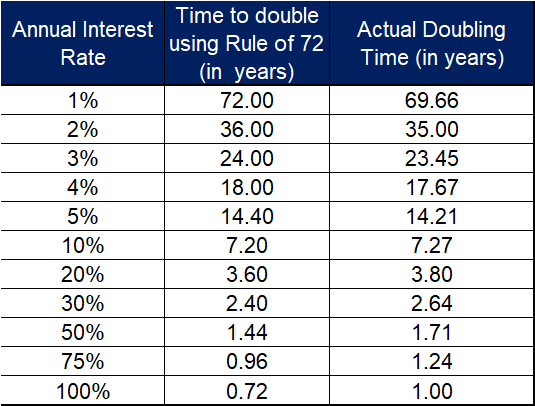
This is the Rule of 72 – An amazing approximation method to calculate how much time does it take for your money to double.
So how does it work?

- If your mutual fund or FD were to give say 10% return per year, it would take approximately 7.20 years [72/10 = 7.20] to double your money.
- Also, remember, this is an approximation and not an exact number. The table above explains the difference in approx and actual numbers.
- Interest or Returns: Talking about calculating the returns, if someone were to tell you that your money would double in say 12 years, you could immediately tell them that the rate of return or interest offered is only 6% [72/12 = 6%] p.a.
- The formula used here is Rate of Return = [72 / Number of years to double]
- Inflation: This rule can also help you understand inflation impacts. It helps you to calculate the amount of time it will take for inflation to make the real value of money half.
- E.g. Let’s say the present inflation is 4% (and it stays that way). When you divide 72 by 4, the answer is 18 years. So if you have INR 1,00,000 today, it would take 18 years for the value of this money to be halved.
- Similarly, “Rule of 114” and “Rule of 144” tell you how long it takes for your money to triple or quadruple (4 times)
- Basically, at 6% p.a., INR 1,00,000 investment will triple in about 19 years (114 / 6 = 19) and quadruple in about 24 years (144 /6 = 24).
2. KNOWING WHETHER YOUR ARE REALLY WEALTHY?
The Stanley and Danko Formula tells you if you are really wealthy?
This mathematical formula tells you what your ‘net worth’ should actually be (or your ‘expected’ net worth) in 2 minutes:

Basis this, a person is categorized in one of three ways:
a. Under accumulators of wealth (UAWs): Whose real net worth is less than one-half of their expected net worth.
b. Average accumulators of wealth (AAW): Who are at par with their expected net worth.
c. Prodigious accumulators of wealth (PAWs): Whose net worth is twice or more than their expected net worth.
Lets understand with an example:
- Ram, 50, has a net worth of INR 2 Crores and Shyam, 30, has a net worth of INR 15 Lakhs. So this is their actual net worth respectively. Now let’s see what their net worth should be according to the formula:
- Ram earns INR 15,00,000 a year and has investments that return INR 150,000 for a total annual income of INR 16,50,000. Multiplied by 50 (his age) that’s 8.25 Crores. Divided by 10, the expected net worth should be INR 82,50,000. Now, because INR 2 Crores is greater than twice of INR 82,50,000, Ram is a PAW.
- Shyam on the other hand earns INR 11,00,000 per year. Multiplied by 30 (his age), that’s INR 3.3 Crores. Divided by 10, his expected net worth should be INR 33,00,000. But he’s only worth $15,00,000. Hence is real net worth is less than one-half of the expected net-worth and is an under accumulator of wealth (UAW)
Now from Finance, moving to some quick math hacks:
3. MULTIPLYING ANY NUMBER BY 11
- Lets start by understanding multiplying a 2 digit number by 11
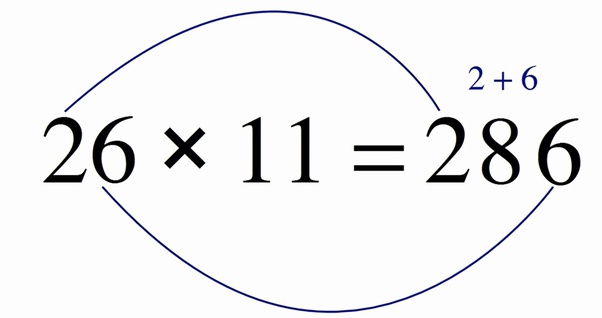
Place the first and last digits as it is and place their sum in the middle. Voila, you have your answer. Here, 26 x 11 = 2 (2+6) 6 = 286.
- But what if the sums of units and tens digits are more than 10? We carry forward the 1 then to first digit – images below explain:

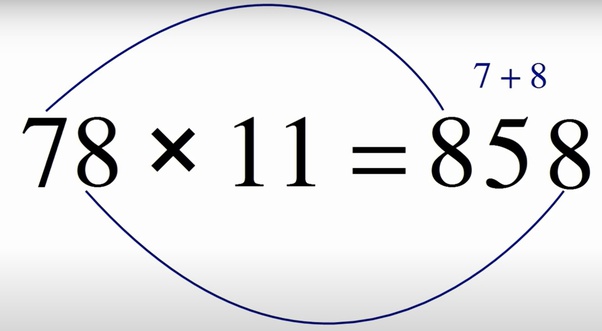
- Now, the same logic applies to more than 2 digit numbers as well. Say we have a 5 digit number 15342 x 11, how do we do it? See the illustration below along with the steps in the end of the image.

Isn’t it really easy to calculate? So lets look at some more hacks !!
4. MULTIPLY LARGE NUMBERS IN YOUR HEAD
What is the numbers need not be multiplied by 11 and there are two different numbers altogether?
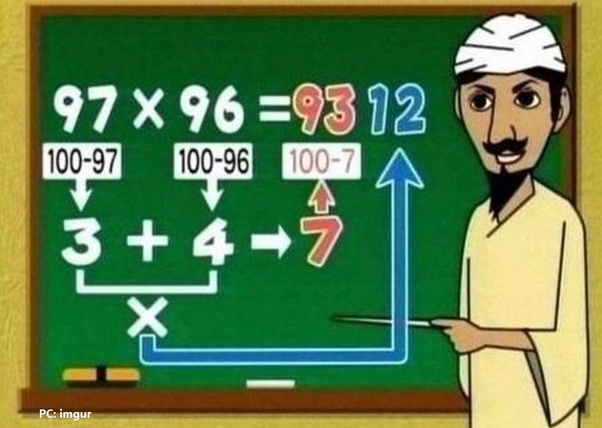
However, if you have a paper and pen handy and want to use another method, you can use this intersecting node method.
- Say you want to multiply 23 and 13, you draw 2 parallel lines and 3 parallel lines from top left to bottom right (as shown in the image) and you draw 1 and 3 parallel lines (for 13) perpendicular to the earlier lines. Now divide this into 3 planes and count the nodes. Your answer is 2 9 9, basically the intersecting nodes in each section give you the answer:
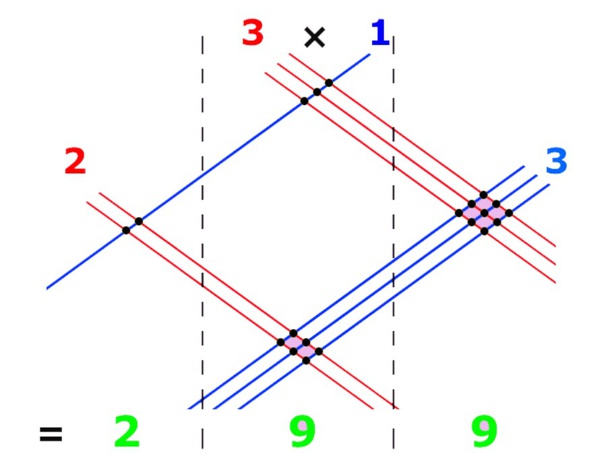
5. VALUE OF Pi = ??
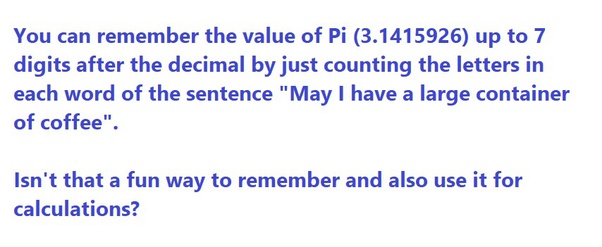
6. BUTTERFLY METHOD FOR ADDING OR SUBTRACTING FRACTIONS
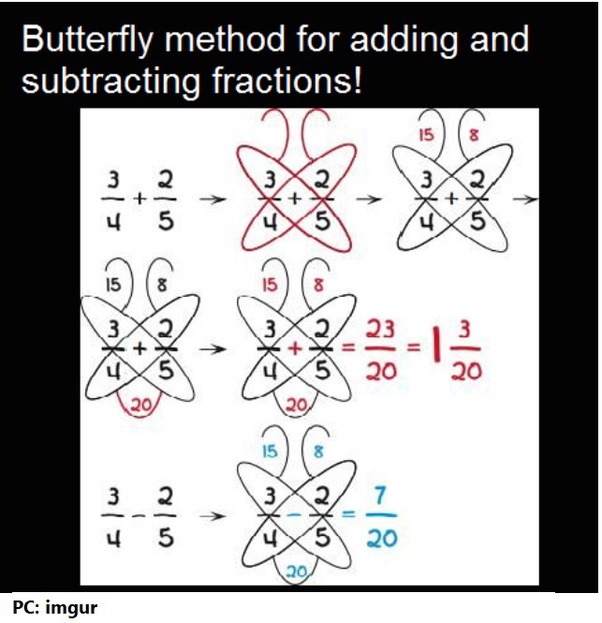
7. CELSIUS (C) to FAHRENHEIT (F) and VICE-VERSA in 30 seconds !!

8. LASTLY, knowing the day of the week for any historical date and this will take full 5 minutes to learn and remember. So shall use some images to explain the tables also.
- Figuring out the day of the week on any date in the 21st century
To understand this, we need to remember 2 tables containing codes – one for every day of the week and one for the months:
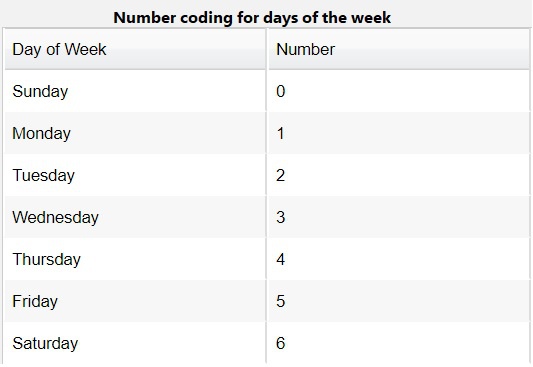
Please note: In leap years, January reduces by one to 5, and February reduces by one to 1. The other years don’t change in leap years.
First 4 Non-Leap Year Codes:
- 2000 = 0
- 2001 = 1
- 2002 = 2
- 2003 = 3
You’ll note that the year codes for 2000-2003 progressed in a nice, simple, 0-1-2-3 order. This is because a normal year consists of exactly 52 weeks (52 × 7 = 364) plus 1 day, to make 365 days. So, from one 365-day year to the next 365-day year, a given date in a given month will fall one day later.
However, a 366-day leap year means that everything must jump ahead 2 days. This also means that the year codes for leap years will jump ahead 2 instead of 1. You might expect 2004 to be a 4, but because it’s a leap year, it jumps ahead to 5.
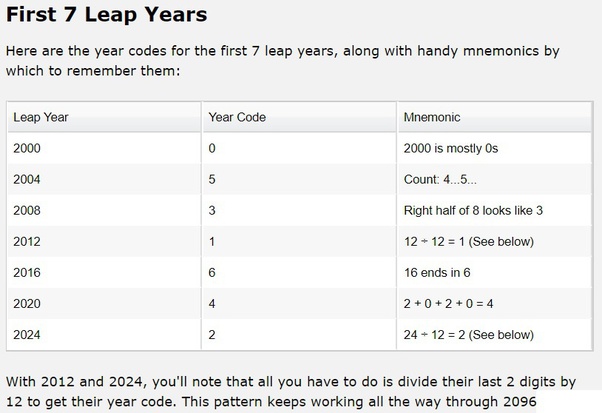
- 2012 = 1
- 2024 = 2
- 2036 = 3
- 2048 = 4
- 2060 = 5
- 2072 = 6
- 2084 = 7 = 0 (Remember to drop any multiples of 7!)
- 2096 = 8 = 1 (Remember to drop any multiples of 7!)
When given a non-leap year, we need 2 pieces of information:
- The year code for the nearest leap year BEFORE the given year, and
- How far the given year is from that leap year. When we have these two pieces of information, simply add them together (remembering to drop any multiples of 7), and we have the year code.
- For example, take 2009. The closest leap year is 2008, which has a year code of 3 (remember?), and 2009 is 1 year later. So, we work out 3 + 1 = 4, so 2009’s year code is 4!
Now lets learn how to find out the day for any date.
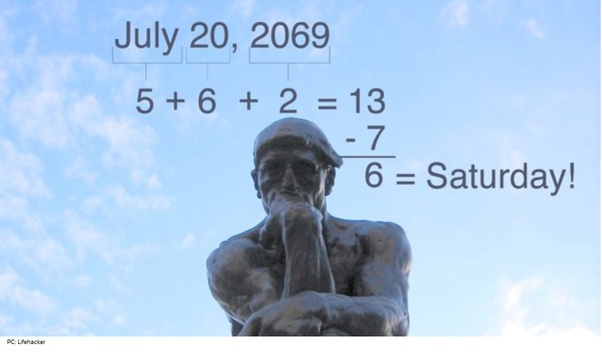
Lets try to find out the day of the week for July 20, 2069. We will using the tables mentioned above:
- The month July has a number code of 5
- The digit 20 is 6 more than the nearest multiple of 7. (Remember, we need to always subtract any multiple of 7 and the residual number is to be taken which is 6 here)
- For the year 2069, lets take the nearest leap year which is 2068. Code for 2068 is 1 as we understood earlier
- (2060 is mentioned by Rule of 12 as 5. Now every year adds 1 and every leap year adds 2. Also, for every time it equals or crosses 7, subtract 7).
- 2061 = 6, 2062 = 0, 2063 = 1, 2064 = 3 (leap year), 2065 = 4, 2066 = 5, 2067 = 6, 2068 = 8 or 1 (8–7) and hence 2069 equals 2 in the code table.
- (2060 is mentioned by Rule of 12 as 5. Now every year adds 1 and every leap year adds 2. Also, for every time it equals or crosses 7, subtract 7).
- Hence, our sum of the date, month and year codes comes to 5+6+2 = 13.
- Subtract 7 from 13, we get 6.
- From the table of days of the week, 6 is for a Saturday. Hence we get to know the day of the week.
- This looks complicated but once you try it a couple of times, you will be able to tell any day within a couple of minutes.
I am sure these small hacks, relating to finances or life would surely help you speed up your calculations and be a notch up above the rest of your friends !!
If I get 1000+ upvotes, I will share some more bonus life & math hacks 🙂
Cheers !!




